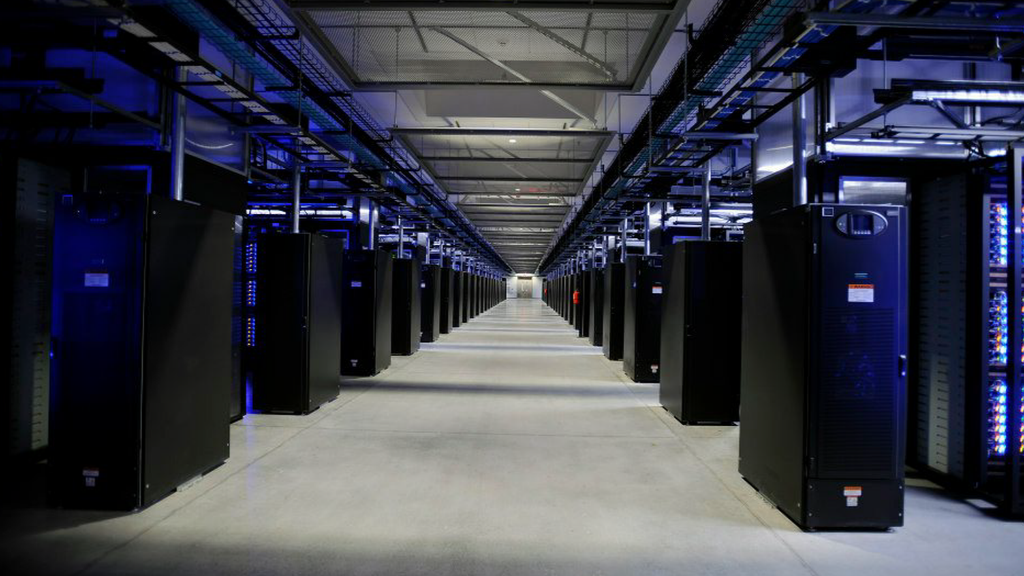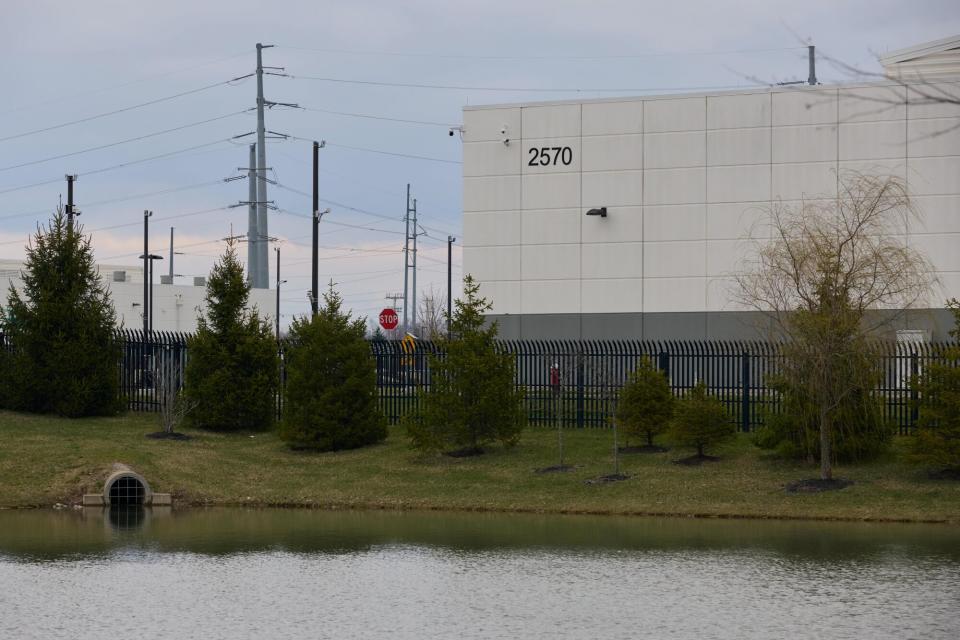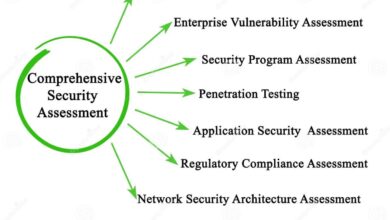
Amazon to Build $2 Billion Secret Data Center for Australian Military Intelligence
Amazon to build a 2 billion secret data center for Australian military intelligence? Whoa! That’s a headline that’s got the tech and geopolitical worlds buzzing. This massive undertaking raises a ton of questions – from the strategic advantages for Australia to the potential security risks involved in entrusting such sensitive information to a US-based tech giant. We’re diving deep into this story, exploring the economic implications, the technological marvels involved, and the crucial security considerations that will undoubtedly shape this project’s success (or failure).
Think about it: a $2 billion investment in a data center specifically designed for Australian military intelligence. That’s a serious commitment, and it speaks volumes about the growing reliance on cloud computing and the strategic partnerships forming in the Indo-Pacific region. But what are the potential downsides? What happens if something goes wrong? We’ll be examining all angles to give you the full picture.
The Geopolitical Implications of the Data Center

The Australian government’s decision to partner with Amazon Web Services (AWS) to build a $2 billion secret data center for military intelligence carries significant geopolitical weight. This move, while seemingly focused on enhancing Australia’s technological capabilities, has far-reaching implications for its strategic alliances, regional relationships, and national security. This analysis will explore these multifaceted consequences.
Strategic Advantages for Australia
Partnering with AWS offers Australia several key strategic advantages. AWS’s globally distributed infrastructure provides access to advanced computing power and data storage capabilities far exceeding what Australia could independently develop and maintain. This translates to improved intelligence analysis, enhanced cybersecurity, and a more robust national defense posture. The speed and scalability of cloud computing also allow for quicker responses to emerging threats and more efficient resource allocation within the defense sector.
Furthermore, AWS’s expertise in data analytics can provide valuable insights from diverse data sources, improving decision-making within the military and intelligence communities. This partnership also positions Australia at the forefront of technological advancements in military intelligence, potentially giving it a competitive edge in the Indo-Pacific region.
Impacts on Australia’s Relationships with Other Nations
The data center partnership with AWS could influence Australia’s relationships with other nations in the Indo-Pacific. Closer ties with the United States, given AWS’s American origin, are likely to be strengthened. However, this could strain relations with nations wary of increasing US influence in the region, particularly those with closer ties to China. The potential for data sharing with the US, and the implications for national sovereignty, may raise concerns among some regional partners.
Transparency and clear communication regarding the data center’s purpose and operations will be crucial in mitigating potential negative impacts on Australia’s diplomatic relationships. This will require skillful diplomatic maneuvering to balance the strategic benefits of the partnership with the need to maintain positive relationships with all key players in the region.
Security Concerns Related to Reliance on a US-Based Company
Relying on a US-based company for sensitive military data presents several security concerns. The potential for US government access to Australian intelligence, even if unintentional or indirect, is a major risk. This raises questions about data sovereignty and the potential for compromising sensitive national security information. The risk of cyberattacks targeting the data center, potentially originating from state-sponsored actors, is another significant concern.
Robust cybersecurity measures and stringent data protection protocols are essential to minimize these risks. Regular security audits and independent assessments will be critical in ensuring the data center operates within acceptable security parameters. The need for robust oversight mechanisms to prevent unauthorized access or data breaches is paramount.
Comparison with Similar Arrangements
Many nations have entered into similar partnerships with technology providers for military and intelligence purposes. The UK, for example, has collaborated extensively with various tech companies on national security projects. However, the scale and sensitivity of the Australian-AWS partnership are noteworthy. The level of data sharing and the integration of AWS’s infrastructure into Australia’s national security apparatus present a unique set of challenges and opportunities.
A careful study of similar arrangements, including their successes and failures, can inform best practices for managing risks and maximizing benefits. Learning from both positive and negative examples set by other countries is crucial to successfully navigate this strategic partnership.
Benefits and Risks of the Data Center
| Benefit/Risk | Description | Likelihood | Mitigation Strategy |
|---|---|---|---|
| Enhanced Intelligence Capabilities | Improved data analysis, faster response times, better decision-making. | High | N/A (inherent benefit) |
| Improved Cybersecurity | Access to AWS’s advanced security infrastructure and expertise. | High | Ongoing security audits and investments in cybersecurity. |
| Data Sovereignty Concerns | Potential for unauthorized access by US government or foreign actors. | Medium | Strict data protection protocols, independent oversight mechanisms. |
| Cyberattack Vulnerability | Increased risk of targeted attacks on the data center. | Medium | Robust cybersecurity measures, incident response planning. |
| Strain on Regional Relationships | Potential for negative impacts on relations with countries wary of US influence. | Medium | Transparent communication, diplomatic engagement. |
Technological Aspects of the Data Center

A $2 billion data center for Australian military intelligence demands cutting-edge technology, robust security measures, and substantial infrastructure. This facility will likely represent a significant leap forward in Australia’s intelligence gathering and analysis capabilities, impacting its national security posture and international relations. The technological specifications would need to be meticulously planned and implemented to meet the stringent requirements of such a sensitive operation.
Security Features and Data Processing Capabilities
The data center’s security will be paramount. Expect multi-layered physical security, including biometric access control, intrusion detection systems, and perhaps even hardened infrastructure designed to withstand physical attacks. Data processing capabilities will involve high-performance computing clusters capable of handling massive datasets and complex analytical tasks. Redundancy and failover mechanisms will be crucial, ensuring continuous operation even in the event of hardware failures or power outages.
Advanced encryption techniques, both at rest and in transit, will protect sensitive data from unauthorized access. This level of security might mirror that seen in high-security facilities like the NSA’s Utah Data Center, though adapted to the specific needs of Australian military intelligence. Data will likely be processed using specialized software and algorithms designed for signal intelligence, image analysis, and other intelligence-gathering tasks.
Cloud Computing and Advanced Technologies
While a significant portion of the data will likely reside on-premises for security reasons, the integration of cloud computing is probable, but in a hybrid model. Sensitive data might remain on-site, while less sensitive data, or data requiring rapid processing, could be handled through secure cloud services. Advanced technologies such as artificial intelligence (AI) and machine learning (ML) will likely be incorporated for tasks like automated threat detection, predictive analytics, and pattern recognition within the vast datasets.
This mirrors the trend towards AI-powered intelligence analysis seen in other advanced militaries. For example, the US military uses AI for drone surveillance analysis and target identification.
Types of Data Stored and Processed, Amazon to build a 2 billion secret data center for australian military intelligence
The data center will house a diverse range of sensitive information. This includes signals intelligence (SIGINT) intercepted from various communication channels, human intelligence (HUMINT) gathered from various sources, geospatial intelligence (GEOINT) from satellite imagery and other sources, and open-source intelligence (OSINT) gathered from publicly available information. The sheer volume and variety of data will necessitate advanced data management and analysis tools.
The data will include both structured and unstructured formats, requiring robust data storage and retrieval systems. The scale of data processed will likely be comparable to major global tech companies’ data centers, if not larger, given the sensitive nature of the information.
Infrastructure Requirements
A data center of this scale demands substantial infrastructure. Power requirements will be immense, likely relying on multiple redundant power sources, including generators and possibly renewable energy sources to ensure continuous operation. Sophisticated cooling systems are essential to manage the heat generated by the vast number of servers. This could involve liquid cooling, or advanced air-cooling systems designed for high-density computing environments.
The networking infrastructure will need to be highly secure and high-bandwidth, capable of handling the constant flow of data from various sources and to various users. High-speed fiber optic connections and potentially dedicated satellite links will be necessary. The physical location will likely be chosen based on factors like seismic stability, accessibility, and proximity to power and network infrastructure.
A robust security perimeter around the entire facility would also be necessary.
Hypothetical Data Center Architecture
Imagine a diagram representing the data center’s architecture. At the core are massive server racks housing high-performance computing clusters. These are connected via a high-speed internal network, possibly using a mesh topology for redundancy. This internal network is then connected to the external world via secure gateways and firewalls, which manage all incoming and outgoing traffic. Separate zones exist for different levels of security classification.
A dedicated area houses the power generation and cooling systems, with redundant systems in place. Physical security measures, such as perimeter fencing, security guards, and surveillance systems, surround the entire facility. A separate, secure area houses the backup systems and disaster recovery infrastructure. The entire facility is connected to multiple high-bandwidth fiber optic lines and potentially satellite links for communication and data transfer.
This setup ensures both high availability and strong security, crucial for a facility handling such sensitive data.
Economic and Societal Impacts

The proposed $2 billion Amazon data center for Australian military intelligence presents a complex interplay of economic and societal consequences. While the project promises significant short-term economic boosts and long-term strategic advantages for Australia, careful consideration of potential negative impacts on local communities and the environment is crucial. This analysis explores the multifaceted effects of this ambitious undertaking.The construction and operation of such a large-scale data center will undoubtedly generate substantial economic benefits for Australia.
This goes beyond immediate construction jobs; it extends to the ongoing maintenance, support services, and the ripple effect on related industries.
Economic Benefits and Job Creation
The project’s immediate economic impact will be substantial. Construction alone will create thousands of jobs, ranging from skilled tradespeople to engineers and project managers. Once operational, the data center will require a significant workforce for ongoing maintenance, security, and IT support. This sustained employment will stimulate economic growth not only in the immediate vicinity but also across the broader Australian economy.
Similar projects in other countries have shown a multiplier effect, with related industries like transportation, hospitality, and local businesses experiencing increased activity. For example, the construction of a large data center in Dublin, Ireland, resulted in a significant increase in local employment and boosted the regional economy. The ongoing operational needs of the data center will also generate sustained economic activity.
Societal Impacts
The societal impacts of this project are multifaceted and warrant careful consideration. It’s important to weigh the potential benefits against the potential drawbacks.
- Positive Impacts: Increased employment opportunities, improved infrastructure in the surrounding area (potentially including improved transportation links and upgraded utilities), enhanced national security through improved data processing capabilities, potential for technology transfer and skill development within the Australian workforce.
- Negative Impacts: Potential strain on local infrastructure (e.g., increased demand for electricity, water, and transportation), risk of environmental impact (e.g., increased energy consumption and waste generation), potential for job displacement in other sectors if resources are disproportionately allocated to this project, concerns regarding data privacy and security, potential for increased surveillance and its impact on civil liberties.
Effects on Local Communities and Infrastructure
The influx of workers during construction will likely place a strain on local housing, transportation, and other essential services. Careful planning and collaboration with local authorities are essential to mitigate these potential challenges. The long-term impact on local communities will depend on the extent to which the project benefits the region beyond direct employment opportunities. For instance, improved infrastructure resulting from the project, such as better roads or public transport, could have lasting positive effects.
However, without careful management, the rapid growth could also lead to increased housing costs and pressure on existing services.
Long-Term vs. Short-Term Economic Impacts
The short-term economic impacts will be primarily focused on job creation during construction and the initial operational phase. This will be a significant boost to the local and national economy. However, the long-term impacts are more nuanced. Sustained employment from the data center’s operation will contribute to ongoing economic growth. The potential for technological spin-offs and the development of a skilled workforce in the IT sector represent substantial long-term benefits.
However, potential risks include the concentration of economic activity in a single sector, making the region vulnerable to changes in the global technology market. A well-planned strategy that diversifies the local economy and invests in broader community development will be crucial to ensuring long-term sustainability.
Security and Privacy Considerations
The construction of a $2 billion data center for Australian military intelligence, managed by Amazon, raises significant security and privacy concerns. The sheer volume of sensitive data involved, coupled with the potential for sophisticated cyberattacks, demands a robust and multi-layered security approach. This requires careful consideration of both physical and digital security measures, as well as stringent adherence to data privacy regulations.
Potential Security Threats and Vulnerabilities
The data center faces a multitude of threats, ranging from physical breaches to advanced persistent threats (APTs). Physical security vulnerabilities include unauthorized access to the facility itself, potential sabotage, or even insider threats. Digital threats include denial-of-service (DoS) attacks, data breaches via exploited vulnerabilities in software or hardware, and sophisticated malware designed to exfiltrate sensitive information. The potential for nation-state actors to target the facility is a particularly significant concern, given the sensitive nature of the data stored within.
These actors possess the resources and expertise to employ highly advanced attack methods. Furthermore, the reliance on cloud infrastructure introduces additional vulnerabilities, such as potential weaknesses in Amazon’s own security protocols or the possibility of compromised third-party services.
Data Protection Measures
Amazon and the Australian military must implement a comprehensive security strategy to mitigate these risks. This should include multi-factor authentication for all personnel accessing the data center, rigorous access control policies based on the principle of least privilege, and continuous monitoring of the network for suspicious activity. Physical security measures should encompass robust perimeter security, surveillance systems, and intrusion detection systems.
Data encryption, both in transit and at rest, is crucial. Regular security audits and penetration testing are essential to identify and address vulnerabilities before they can be exploited. Incident response plans must be developed and regularly tested to ensure a swift and effective response to any security breaches. Furthermore, collaboration with cybersecurity experts and intelligence agencies is vital to stay ahead of evolving threats.
This collaborative approach would leverage the expertise of various stakeholders to provide a more comprehensive defense strategy.
So, Amazon’s building a $2 billion secret data center for Australian military intelligence – mind-blowing, right? This massive undertaking highlights the growing need for secure, scalable solutions, which brings me to the exciting advancements in application development. Check out this article on domino app dev the low code and pro code future to see how these technologies might be used to manage such a complex project.
Ultimately, the data center’s success likely hinges on efficient, secure software, making the low-code/pro-code future even more critical in this kind of high-stakes environment.
Data Privacy and Compliance
The data center must comply with relevant Australian and international data privacy regulations, such as the Privacy Act 1988 and the EU’s General Data Protection Regulation (GDPR), if applicable. This includes establishing clear data governance policies, ensuring data minimization, and providing individuals with appropriate control over their personal data. Transparency and accountability are key; the data handling practices must be documented and auditable.
Independent audits should be conducted regularly to ensure ongoing compliance. Data retention policies must be clearly defined and implemented, ensuring that data is only retained for as long as necessary. The potential impact of data breaches on individuals’ privacy rights must be carefully considered and mitigated through robust security measures and transparent communication.
Best Practices for Securing Sensitive Military Data in a Cloud-Based Environment
Securing sensitive military data in a cloud environment necessitates a layered security approach. This includes utilizing encryption at all levels, employing robust access controls, and implementing continuous monitoring and logging. Regular vulnerability assessments and penetration testing are crucial. The use of a zero-trust security model, where every access request is verified regardless of its origin, is highly recommended.
Furthermore, rigorous vetting of all personnel with access to the data is essential, along with strict adherence to security protocols and procedures. Employing advanced threat detection systems and leveraging artificial intelligence and machine learning for anomaly detection can further enhance security. Regular security awareness training for all personnel is critical to mitigate the risk of human error.
Cybersecurity Risks and Mitigation Strategies
The following points Artikel potential cybersecurity risks and the corresponding mitigation strategies:
- Risk: Insider threats (malicious or negligent employees). Mitigation: Background checks, strict access controls, security awareness training, regular audits, and robust monitoring of user activity.
- Risk: Advanced persistent threats (APTs) from state-sponsored actors. Mitigation: Threat intelligence sharing, proactive threat hunting, intrusion detection systems, and robust incident response capabilities.
- Risk: Data breaches via exploited software vulnerabilities. Mitigation: Regular software patching, vulnerability scanning, penetration testing, and secure software development practices.
- Risk: Denial-of-service (DoS) attacks. Mitigation: Distributed denial-of-service (DDoS) mitigation solutions, network segmentation, and robust infrastructure design.
- Risk: Physical security breaches. Mitigation: Perimeter security, surveillance systems, access control systems, and robust physical security protocols.
- Risk: Cloud provider vulnerabilities. Mitigation: Careful selection of cloud providers, regular security audits of the provider, and the use of multiple cloud providers to reduce reliance on a single point of failure.
Last Word: Amazon To Build A 2 Billion Secret Data Center For Australian Military Intelligence
The planned Amazon data center for Australian military intelligence is a game-changer, a bold step into a future where cloud computing plays a pivotal role in national security. While the potential benefits are undeniable – improved data processing, enhanced security, and economic growth – the project also presents significant challenges, particularly regarding data security and sovereignty. Ultimately, the success of this venture hinges on careful planning, robust security measures, and transparent communication between Amazon, the Australian government, and the public.
It’s a story we’ll continue to follow closely, as its implications ripple far beyond Australia’s shores.
General Inquiries
What specific security features will the data center likely employ?
Likely features include advanced encryption, multi-factor authentication, intrusion detection systems, and physical security measures like biometric access control and 24/7 surveillance.
How will this data center impact Australia’s relationship with its allies?
This could strengthen ties with the US but might raise concerns among other nations, particularly those wary of US influence in the region. Transparency and clear communication will be key to managing these relationships.
What are the potential long-term job creation numbers associated with this project?
Precise numbers are difficult to predict, but the project will likely create thousands of jobs, encompassing construction, IT support, and ongoing maintenance and operation.





